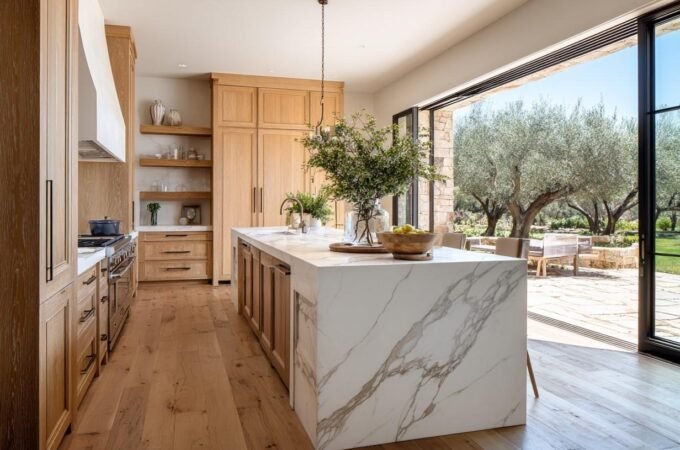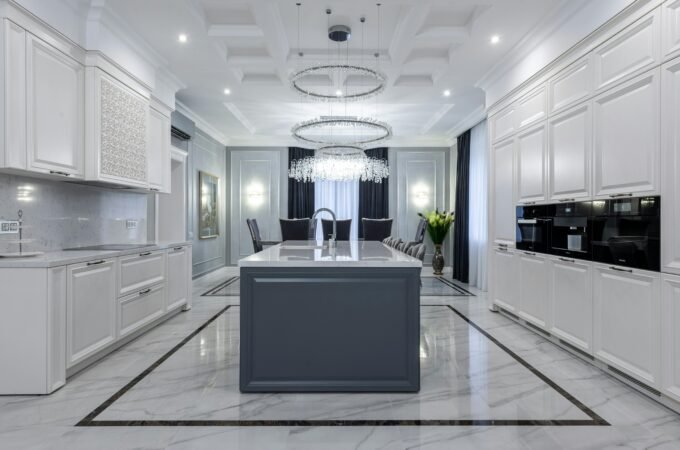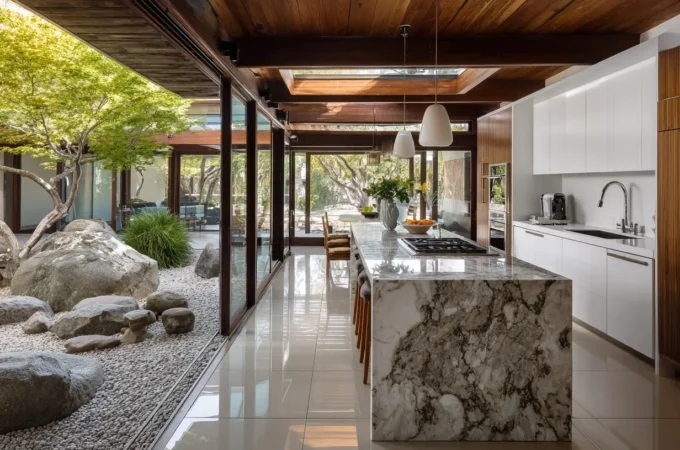
Do It Yourself Kitchen Cabinet Hardware Swap for Instant Style
If you want to change the look of your kitchen without tearing out walls or spending thousands of dollars, you’re in the right place. Your can do it yourself kitchen cabinets.
One of the easiest, fastest, and most budget-friendly ways to give your kitchen a fresh new vibe is by swapping out your cabinet hardware.
Yes—just changing your handles, knobs, and pulls can transform your entire kitchen.
It’s like giving your cabinets a brand-new outfit.
You don’t need to be a carpenter. You don’t need fancy tools. All you need is do it yourself kitchen cabinets , a screwdriver, a little time, and a few simple tips (which you’ll find right here).
This guide will walk you through everything you need to know—from choosing the right hardware to installing it properly—for a complete kitchen style upgrade you can do all by yourself.
Why Cabinet Hardware Makes a Big Difference
Cabinet hardware may seem small, but it packs a big punch when it comes to design.
Think about it: Your kitchen cabinets take up a lot of wall space. Whether you have a modern flat-panel look or traditional raised-panel doors, the knobs and pulls act like accessories. Just like shoes complete an outfit, hardware completes the look of your kitchen.
Changing these little pieces can:
- Instantly update outdated cabinets
- Tie your space into a specific style (modern, farmhouse, vintage, etc.)
- Add visual interest and a pop of color or contrast
- Make old cabinets feel new again
It’s a small change that creates a huge impact.
And the best part? You don’t need to repaint, replace your doors, or hire a contractor. You just unscrew the old ones, screw in the new ones, and admire the results.
How to Pick the Right Hardware Style for Your Kitchen
Not all knobs and pulls are created equal. The style you choose will influence the entire feel of your kitchen. Luckily, there are tons of options out there to fit every look and every budget.
Let’s explore some popular styles:
1. Modern and Minimalist
If you like clean lines and a simple, uncluttered kitchen, go for sleek hardware.
- Best Choices: Bar pulls or edge pulls in matte black, stainless steel, or brushed nickel.
- Good Match For: Slab or flat-panel cabinets.
- Why It Works: It adds a crisp, contemporary look without being flashy.
2. Farmhouse or Rustic
Love cozy, homey vibes? Go with something that feels warm and classic.
- Best Choices: Cup pulls, round knobs, oil-rubbed bronze or antique brass finishes.
- Good Match For: Shaker-style or distressed wood cabinets.
- Why It Works: These designs feel like a warm hug from grandma’s kitchen.
3. Traditional and Classic
If your kitchen is more on the elegant side, ornate details will elevate the space.
- Best Choices: Glass knobs, brass pulls, ceramic handles with floral patterns.
- Good Match For: Raised-panel or decorative cabinet doors.
- Why It Works: These timeless styles never go out of fashion.
4. Transitional
Can’t pick between old and new? Transitional styles give you the best of both.
- Best Choices: Simple square pulls, brushed finishes, clean lines.
- Good Match For: Mixed-style kitchens.
- Why It Works: Keeps the space flexible and balanced.
When choosing your style, stand back and look at your cabinets as a whole. What kind of story do you want your kitchen to tell?
Choosing the Right Finish: What Color Works Best?
Now that you know the style, it’s time to choose the finish. The finish is the color and texture of the metal or material used for the hardware.
Here’s how to pick a finish that matches your kitchen’s vibe:
| Finish | Works Well With | Style Vibe |
| Matte Black | White, navy, dark green, or natural wood | Bold, modern, high-contrast |
| Brushed Nickel | Gray, white, beige | Clean, neutral, timeless |
| Antique Brass / Gold | Blue, green, and cream cabinets | Warm, rich, trendy |
| Chrome | Glossy cabinets, modern spaces | Shiny, sleek, clean |
| Oil-Rubbed Bronze | Warm wood, off-white | Rustic, farmhouse, traditional |
Pro Tip: Try to match the finish of your cabinet hardware with other elements in your kitchen, like faucets, light fixtures, or even appliances.
It helps the room feel more put-together and thoughtfully designed.
Tools You’ll Need for the DIY Swap
Before you start removing anything, gather your tools. Don’t worry—you don’t need a full toolbox. Just a few basic items will do:
Basic Tools:
- Screwdriver (Phillips and/or flathead)
- Measuring tape
- Pencil
- Masking tape
Optional Tools (Helpful, But Not Required):
- Drill (for new holes)
- Cabinet hardware template (guides where to drill)
- Level (to make sure handles are straight)
For Repairing Old Holes (if you switch hardware size):
- Wood filler
- Putty knife
- Sandpaper
- Paint or wood stain pen for touch-up
Make sure your new hardware comes with screws. Most do—but double-check so you’re not caught off guard.
Step-by-Step Guide: How to Swap Cabinet Hardware
Now let’s dive into the actual process. If you follow these steps, your kitchen will look brand new by the end of the afternoon.
Step 1: Remove the Old Hardware
Use your screwdriver to remove each knob or handle. Be gentle so you don’t strip the screws or damage the cabinet doors.
If any screws are stuck, wiggle them slowly or use a power drill on low speed.
Step 2: Clean the Area
Old knobs can trap grease and grime. Once they’re off, use a soft cloth and cleaner to wipe down the surface.
Clean surfaces help your new hardware fit tightly and look sharp.
Step 3: Check Your Hole Alignment
Here’s where things get easy or tricky:
- If your new hardware uses the same hole spacing as the old one, perfect! Just screw it in.
- If not, you’ll need to measure and drill new holes.
Measure carefully. Most drawer pulls come in sizes like 3-inch, 3.75-inch, or 5-inch center-to-center spacing.
Step 4: Mark the New Holes
Use masking tape on the cabinet surface to mark where the new holes will go. This makes it easier to pencil in guides and protects the cabinet finish.
You can also use a hardware template (available for \$5–\$10 at hardware stores or online) to make sure your holes are perfectly spaced.
Step 5: Drill New Holes (If Needed)
Go slow and steady when using a drill. Make sure you don’t drill too deep or split the wood. If you’re nervous, practice on a scrap board first.
Use a small drill bit—usually 3/16″ works fine for most cabinet screws.
Step 6: Attach the New Hardware
Screw in your new knob or pull. Tighten it so it’s firm, but don’t overtighten—you could crack the wood or strip the screw.
Use a level to make sure horizontal pulls (like those on drawers) are perfectly straight.
Step 7: Fill Old Holes (Optional)
If your new hardware doesn’t line up with the old holes, fill the unused holes with wood filler. Once dry, sand it down and touch up with paint or a stain pen.
Done right, you’ll never notice the old holes again.
Pro Tips to Make It Look Designer-Level
Want to take your DIY to the next level? These simple tricks will help your kitchen look like it was updated by a pro:
- Stick to One Type of Hardware: Mixing styles can look messy unless done intentionally. Try to use all knobs, or all pulls, or a balanced mix like knobs on uppers and pulls on lowers.
- Try Before You Buy: Tape one knob or pull to your cabinet and step back. Does it feel too small? Too shiny? Return it before buying 20 more.
- Buy Extra Pieces: Always order 2–3 more than you need in case of damage or expansion later.
- Check Screw Lengths: Thicker drawers need longer screws. Most hardware comes with standard-length screws, but you can buy extras if needed.
- Match the Vibe: Hardware shouldn’t feel out of place. A modern pull on a rustic cabinet might look odd unless it’s part of a mixed-style design.
The Budget Breakdown
Here’s a look at how affordable this transformation really is:
| Item | Estimated Cost |
| 20 Cabinet Knobs or Pulls | \$60 – \$120 |
| Screwdriver or Drill | \$10 – \$60 |
| Wood Filler & Sandpaper | \$8 – \$12 |
| Cabinet Template | \$5 – \$10 |
| Total DIY Project | \$85 – \$200 |
Compare that to a full cabinet replacement which can cost \$5,000 or more.
You just got a whole new kitchen feel for under 200 bucks.
Real Results: Before and After
Still not sure how much of a difference this makes? Picture this:
Before: Old, yellowed knobs from 1992. Faded brass. Some loose, some sticky. The kitchen looks tired.
After: Fresh matte black bar pulls. Sleek and clean. The cabinets feel sharper. The whole room pops.
Friends will walk in and say, “Did you get new cabinets?” Nope. Just a clever hardware swap.
Final Thoughts: Style Starts with the Details
Do it yourself kitchen cabinets don’t need a hammer and nails to have a stylish kitchen.
With a little effort and a few screws, you can transform your space in just one afternoon. Swapping cabinet hardware is one of the most satisfying and affordable DIY projects out there. It’s simple, it’s fast, and the impact is huge.
So open up your drawers, grab a screwdriver, and start turning your kitchen into something that feels brand new.
You’ve got this!




